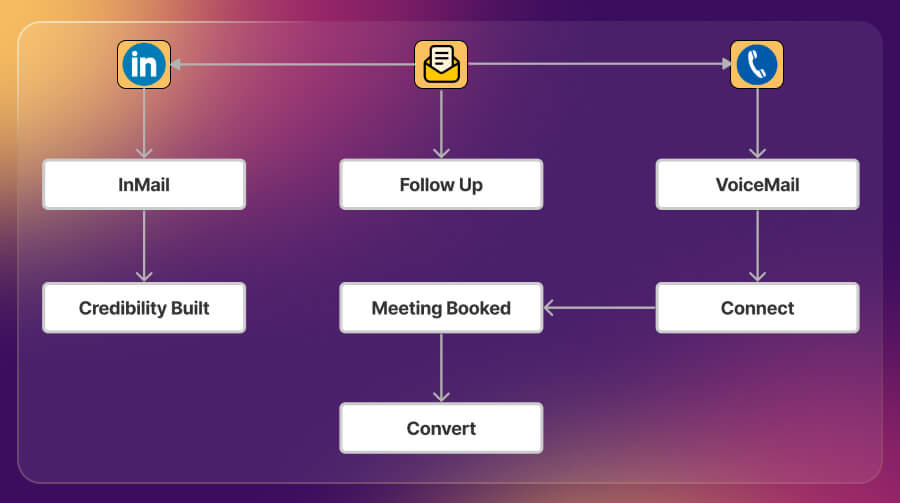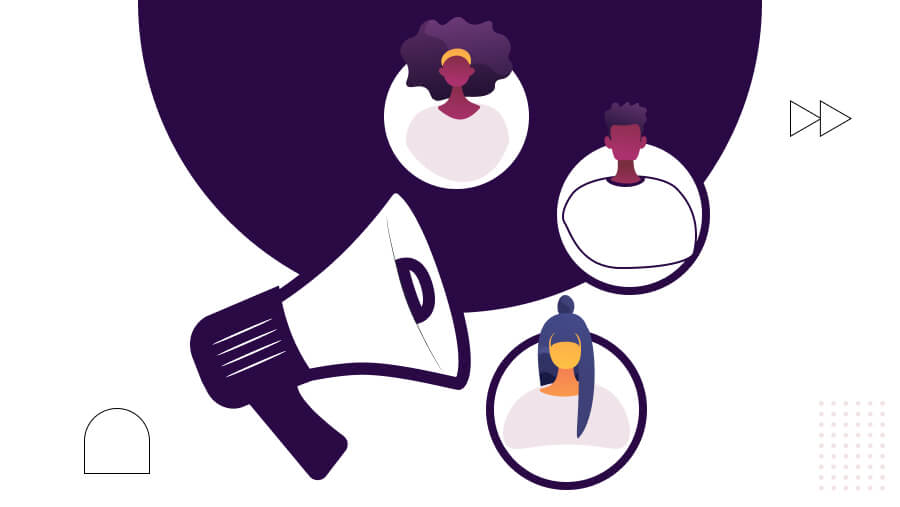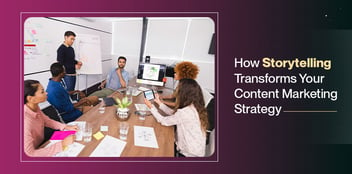
How to Optimize Your Outbound Campaigns for Audience Engagement
Research and Personalization – these are the two critical components of crafting outbound campaigns that truly resonate with your audience.
- Artistically curated, personalized emails deliver 6X higher transaction rates than generic ones.
- Plus, 2/3rds of marketers who dedicate only 6 hours weekly to implementing thoroughly researched social media campaigns successfully capture leads.
Besides these two, an effective outbound lead gen strategy comprises several elements you can optimize. Doing so can take your audience engagement levels up by several notches.
So, to help you in this endeavor, we have some of our proven outbound lead generation strategies to enhance the efficiency of your outbound campaigns.
But first, let’s get the basics right.
What Is Audience Engagement?
Audience engagement refers to the interaction, interest, and involvement prospects have with a particular content, brand, or event. It measures how well your target audience responds to and interacts with your messages, products, or experiences.
High engagement indicates an active and responsive audience segment. On the contrary, low engagement may suggest a lack of interest or connection.
Engagement can manifest through various channels, including:
- Social media interactions
- Website visits as a response to outbound outreach
- Cold Email responses
- Participation in networking events, and in-person meets
The above critical metrics combine to showcase your overall audience engagement. They help your business gauge the effectiveness of its communication and marketing strategies.
So, now that the definition is clear, let’s explore how to tweak your outbound campaigns to maximize audience engagement.
Outbound Marketing: 8 Strategies to Captivate Your Audience
Here’s a rundown of the key tactics you can employ in your outbound marketing approach:
1. Unearth the Golden Nuggets of Your ICP
Gauge and extract the key elements of your Ideal Customer Profile (ICP). Your ICP represents the characteristics of your most valuable customers. Think of it as unearthing golden nuggets – those specific traits that make a customer an ideal fit for your product or service.
Let’s say you're selling high-end fitness equipment. A potential golden nugget in your ICP could be corporate firms with:
- A consistent history of purchasing premium wellness products for their in-house gym
- A demonstrated interest in fitness trends
2. Personalize Your Outreach Efforts
Customization remains a powerful strategy, enhancing customer relationships and driving results. Statistics indicate that 74% of B2B buyers will likely purchase if the experience is personalized.
Hence, consider tailoring your communication, like cold email or call messages that convert, to address specific pain points or industry challenges.
For instance, suppose your potential client is facing issues with tech integration. Here, you can personalize your cold emailing messaging by addressing the issue. Here, you can share informational guides on the topic, suggest solutions for smooth integration, etc. Ensure that you are empathetic towards the target client’s needs and concerns. It increases the chances of a meaningful connection.
Here's another illustration of an outreach cold email with personalized elements:
| Subject Line | Personalized Solutions for [Client's Company Name] |
| Body | Hi [Recipient's Name], We hope this email finds you well. We at [Your B2B Marketing Agency] understand the unique challenges in [Client's Industry]. Our tailored approach has successfully led to a 25% increase in proposal acceptance for businesses like yours. |
| Why Choose Us? | - Industry Insights Our team specializes in [Client's Industry], bringing unmatched insights into your sector's dynamics. - Proven Track Record Explore our case studies showcasing how we've helped businesses like yours achieve remarkable results. - Tailored Proposals Unlike generic proposals, we customize our approach, aligning strategies with your needs and challenges. |
| Case Study Snapshot | [Brief Description of the Case Study] [Specific Results Achieved] [Proposal Acceptance Rate: 25% Increase] |
| Closing | Let's discuss how our personalized solutions can elevate your marketing strategy. Are you available for a brief call this week? Best Regards, [Your Full Name] [Your Position] Contact Information |
3. Use the Power of Storytelling to Captivate Attention
87% of B2B buyers state that they want more content with a narrative element. Hence, craft compelling messages that showcase how your product or service solved real challenges for other businesses.
For example, on the website, you can showcase a story about streamlining operations for any of your clients. Incorporate storytelling skills, such as mentioning each step chronologically along with the concerns/needs of that moment. It will boost the reader’s relevancy with the story. Ensure to mention results, such as % of improved efficiency and cost savings.
4. Tap Non-Linear Buying Journey
Your buyers don’t buy linearly which means if you send only an email cadence, it’s not going to work.
Here's what a linear approach looks like:
.jpg?width=1394&height=385&name=process%20(1).jpg)
The problem with the above approach is that you don't have any other means to convey and reinforce your message. The recipient may forget to open your email or have no time to check their inboxes. It’ll create a disconnect between your brand and the targeted client.
Rather than the traditional linear approach, embrace a non-linear framework by using multi-channel touch.

For instance, you could do the following:
- Send a personalized email introducing a new feature
- Share the relevant content on LinkedIn for engagement
- Use InMail to send a customized message
- Call them to give the human touch
This multi-channel strategy ensures your message reaches decision-makers from different angles. It elevates your brand's visibility and fosters meaningful connections.
5. Embrace Data Analysis as Your Guiding Light
Data analytics is the lifeblood of effective outbound marketing. It enables you to improve your approaches continually. As such, make it a practice to track key metrics on your campaigns.
Let’s say you own a tech company. You might discover that decision-makers engage most with content related to cost efficiency. With this data, you can:
- Refine your approach
- Tailor your messages
- Focus on the channels that resonate most with your audience
6. Nurture Customers, Not Just Leads
Relationship marketing is critical. After all, 80% of the future profits will be from just 20% of its existing customers. Therefore, going beyond mere transactions and fostering connections that lead to long-term loyalty is essential.
As such, adopt a dual approach for nurturing existing and potential relationships.
- For existing clients, continue providing valuable content and personalized communications. Offer exclusive insights that cater to their evolving needs and challenges, reinforcing their loyalty to your brand.
- Simultaneously, engage potential clients by providing them with targeted content that goes beyond standard marketing materials. Offer access to webinars or whitepapers specifically tailored to their industry challenges.
Remember, turning one-time leads into engaged, long-term partners is vital.
7. Embrace Experimentation and Continual Iteration
In the digital realm, change is constant, and so should your outbound strategies.
- Adopt A/B testing to experiment with messaging, channels, and personalization.
- Use gathered data to refine and continually iterate your approach, ensuring your campaigns stay fresh and engaging.
This commitment to adaptability keeps you ahead in the ever-evolving digital landscape.
8. Leverage Technology to Enhance Your Outbound Efforts
Technology drives successful marketing. Companies using marketing an enterprise's automation software achieve an average 14.5% increase in their sales productivity and a 12.2% increase in running overhead.
So, consider fostering marketing automation tools (HubSpot is essential, Mailchimp) to send personalized follow-up emails based on customer interactions. It saves time and ensures your messages are timely and relevant.
By embracing technology, you automate tasks and elevate the efficiency and impact of your outbound efforts.
How to Measure Audience Engagement for Different Channels
Now that we have explained how to optimize your outbound campaigns for heightened audience engagement, let’s check out the outbound lead gen metrics to measure the outcomes:
1. Cold Email Campaigns
- Open Rate: Percentage of emails opened by recipients.
- Click-Through Rate (CTR): Percentage of recipients clicking on a link in the email.
- Reply Rate: Percentage of recipients who respond to the email.
- Conversion Rate: Percentage of recipients who take a desired action, such as booking appointments or scheduling a demo.
2. Cold Calling Campaigns
- Call Pickup Rate: Percentage of calls answered by recipients.
- Call Connection Rate: Percentage of calls that successfully connect with a qualified prospect.
- Call to Meeting Ratio: Number of meetings scheduled per call.
- Call to Close Ratio: Number of deals closed per call.
3. LinkedIn Outreach
- Open Rate: Percentage of InMails opened by recipients.
- CTR: Percentage of recipients clicking on a link in the InMail.
- Response Rate: Percentage of recipients who respond to the InMail.
- Conversation Rate: Percentage of InMail exchanges leading to a meaningful conversation.
4. Direct Mail Campaigns
- Response Rate: Percentage of recipients responding to the direct mail.
- Conversion Rate: Percentage of recipients taking a desired action after receiving the direct mail, visiting your website or office.
5. Trade Shows/Conferences
- Booth Traffic: Number of visitors to your booth or exhibition space.
- Leads Generated: Number of potential customers identified.
- Engagement Rate: Percentage of attendees who actively engage with your presentation or materials.
- Follow-Up Response Rate: Percentage of leads responding positively to post-event follow-up.
These metrics help gauge the effectiveness of your campaigns across various channels and provide valuable insights for optimization.
Conclusion
This comprehensive guide has armed you with vital insights and strategies to master audience engagement. So, grasp the definitions, implement practical engagement measurements, and adhere to essential rules. Then, you'll foster a positive and lasting connection with your audience.
Whether you're exploring B2B lead generation services or pursuing overall improvement, put these tried-and-true methods into action with the support of our experts. Take the next step to achieve unparalleled results in audience engagement—connect with Revnew now!




